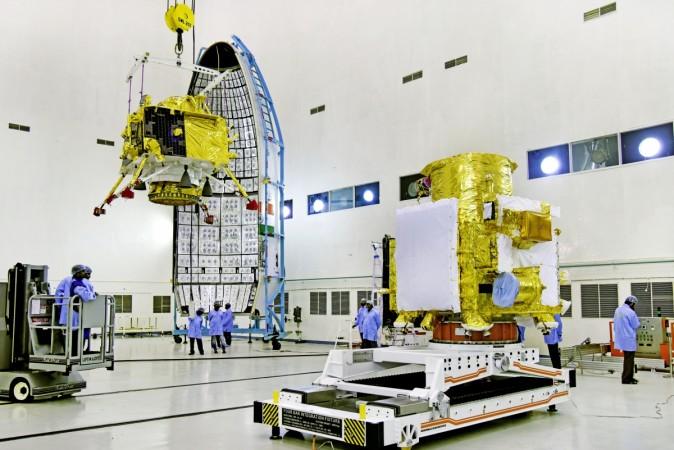
India's space engineers are scrambling to meet a launch deadline of July 22 (Monday) for the Chandrayaan 2 lunar expedition, media reports suggest. The Indian Space Research Organisation (Isro) engineers aborted the initial launch scheduled on July 15 after onboard computers flagged a glitch in the final hour of the launch from the second launch pad of the Satish Dhawan Space Centre (SDSC) in Sriharikota.
A fresh NOTAM (notice to airmen), the mandatory alert issued ahead of every launch, issued on Monday evening indicates Isro's urgency for utilising the July window, according to reports. The alert has been made effective on July 17 between 2:30 am and 3:30 am, and from July 18 to 31 between 2 pm and 3:30 pm.
Isro could use the one-minute window that will be available on next Monday if it could "implement corrective action" to rectify the glitch, sources privy to the developments said, indicating that the official declaration may be made on Wednesday. Reports suggest the anomaly in the readings may have been the result of a pressure drop in the fuel tank, suggesting a leak that might need close examination.

"If all goes well, we may probably see the launch happen as early as next Monday (July 22)," a report on The Times of India website said, quoting an unidentified source. Monday's aborted bid was among a series of launch windows missed since last year by India's second lunar mission that would be unique for its proposed soft landing on the hitherto unattempted 'dark side' of the moon. Every launch has an optimal window to achieve the desired results, reports say. While Monday (July 15) had the longest window of 10 minutes between 2:51 am and 3:01 am, Isro could find a window of one-minute duration each every day for the rest of the month.
If the mission cannot take place this month, Isro may have to wait at least until September. Some reports say that if Isro missed the windows of this month, the launch may take place only in 2020. "The satellite side has done an analysis. According to this, if we miss the July 31 window, there will be an impact on the mission profile," the report quoted a source from Isro Telemetry, Tracking and Command Network (Istrac) as saying.
There were suggestions that the mission planning might need to be reworked if this month's window was missed, and it was estimated that a new plan might need more fuel. "This will affect the operations of payloads. If we miss the deadline, the orbiter's life may be reduced to six months from the present one year, as it would have used up some of its fuel," the source said.
A technical snag was observed in launch vehicle system at 1 hour before the launch. As a measure of abundant precaution, #Chandrayaan2 launch has been called off for today. Revised launch date will be announced later.
— ISRO (@isro) July 14, 2019
The mission was put on hold after the onboard computers flagged an anomaly in India's biggest rocket Geosynchronous Satellite Launch Vehicle (GSLV Mk-III) during the final checks ahead of the launch on July 15.
The 640-tonne behemoth of a launch vehicle that stands 43.3 metres tall can lift an 8,000-tonne payload to the low earth orbit (LEO) or deliver 4,000 tonnes to the geosynchronous transfer orbit (GTO), according to the Isro website. The rocket was expected to place the 3.8-tonne Chandrayaan-2 composite, which includes the lunar orbiter, lander Vikram, and rover, Pragyaan on an Earth-centric orbit of the lowest altitude of 175km.
The spacecraft would get into a moon-centric orbit through a series of orbit-raising manoeuvres using its own motors. The 1.44-tonne lander, made by Russian Federal Space Agency would then be released for a soft landing close to the lunar South Pole, where no other nation has gone. The lander was expected to release the Indian-made rover that weighs 27kg and moves on six wheels on the lunar surface for scientific exploration. The smooth working GSLV MkIII is vital for India's mission to take a human to space that Prime Minister Narendra Modi has announced.

















